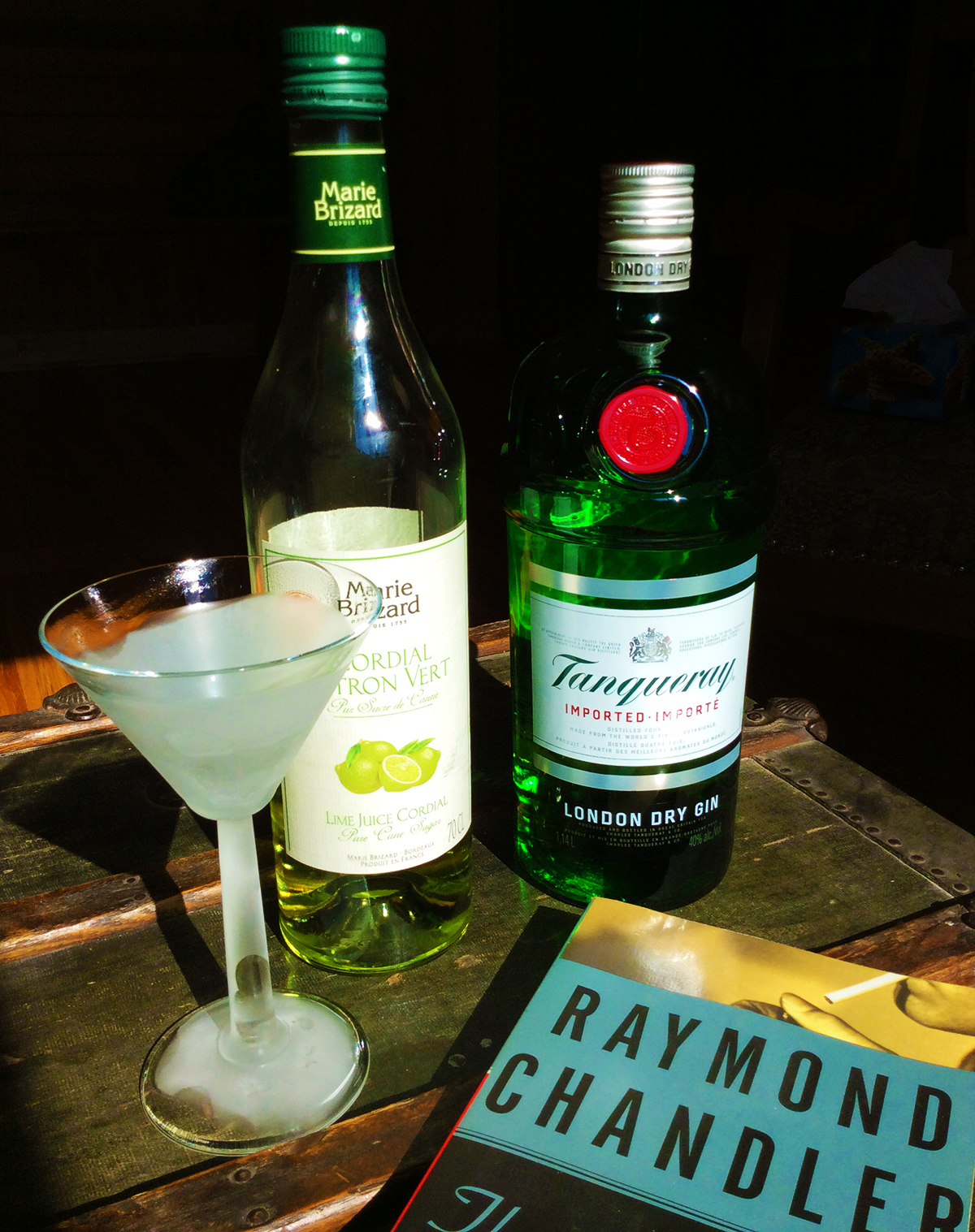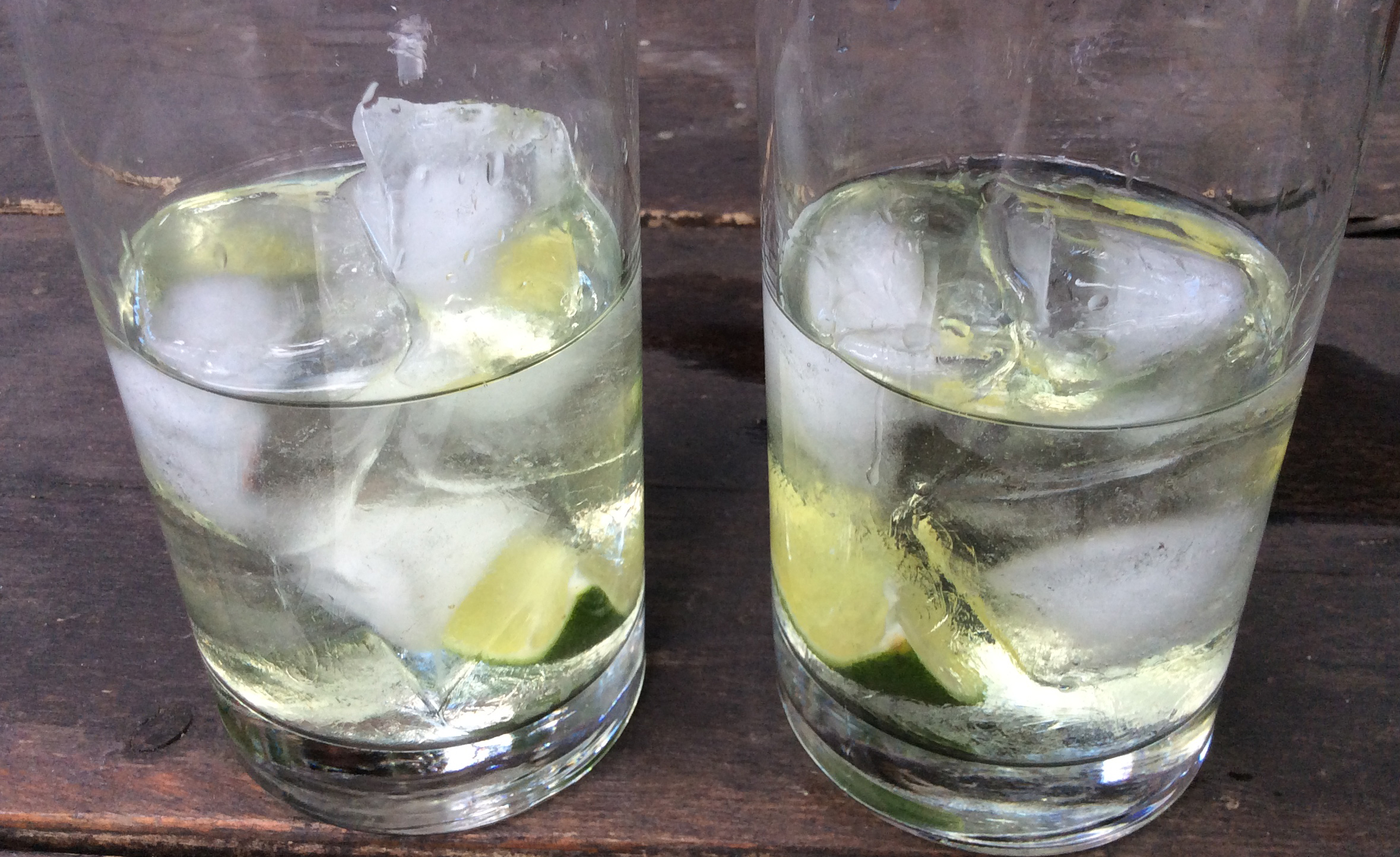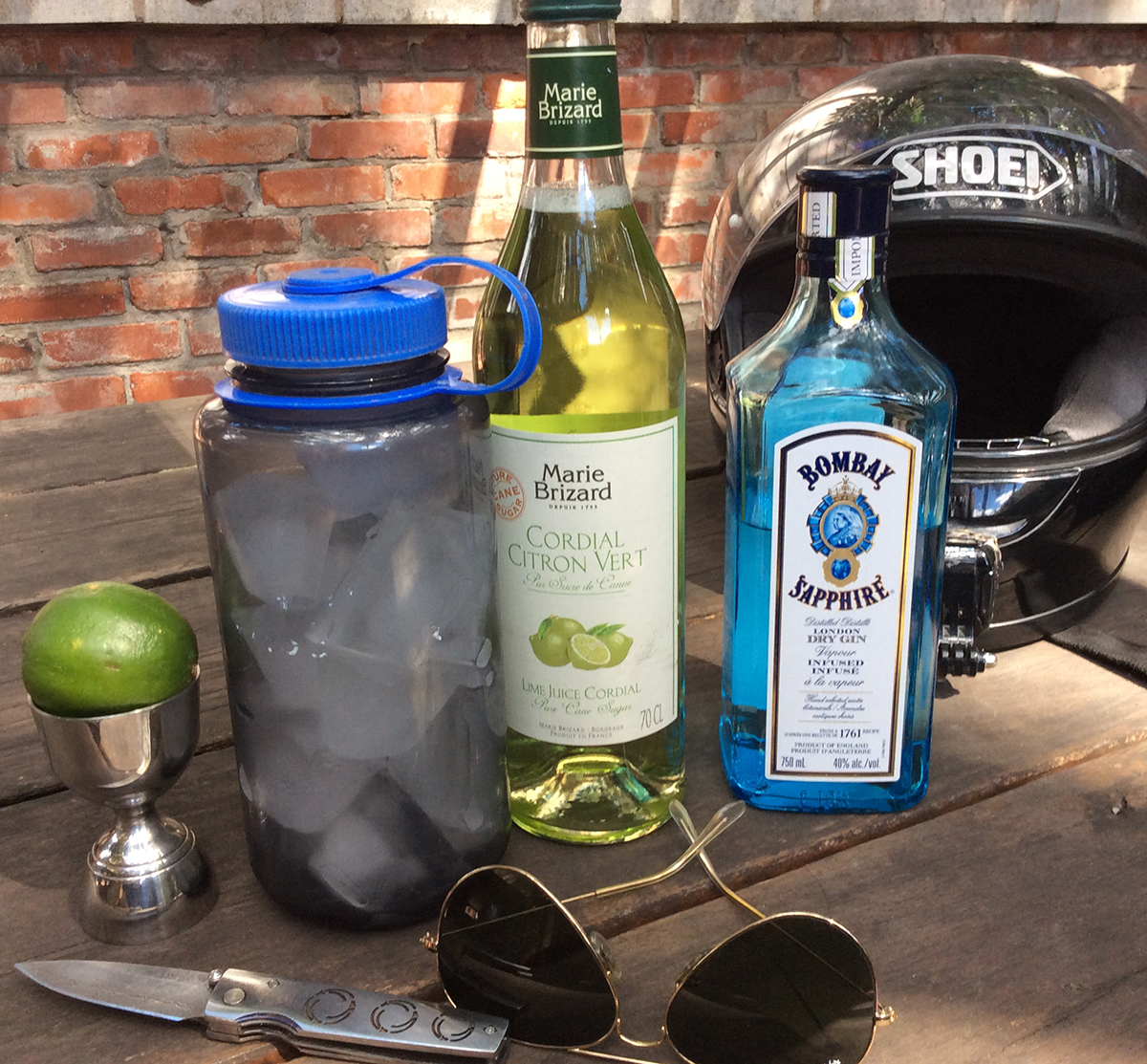
The gimlet… what a drink. It has many things I enjoy in a cocktail, gin, the taste of lime (sort of), an intriguing colour and the British Navy. It is also the only current exception to drinkskultur rule #5. Shaken together vigorously it is delightful, refreshing, crisp and packs quite a punch. In order for you to have one while reading this, yes I do insist, I’ll start with the recipe.
My gimlet
- 2.25 ounces of your favourite gin
- 0.75 ounce of Rose’s lime juice or lime cordial
- I like to shake it shake it, though the original calls for stirring or even serving on the rocks, I suggest you make up your own mind
- No matter what you do use plenty of ice
- Garnish with a wedge of lime
Bitters are optional, I tend not to use any, for the sake of science I will have to try it eventually. When using bitters in any drink remember that less is more, if you think you haven’t put enough you certainly have. Even one drop too much can completely overpower a drink.

One of my cocktail books mentions that gimlets should be made with Plymouth gin (as distinct from London dry gin), but as that particular book is frequently incorrect in details, I always disregarded that advice. Recently however I learned that none other than Harry MacElhone (yes that Harry) also called for the use of Plymouth gin in his early 1920’s cocktail book, so there may be something there after all. However, nowadays there is only one producer of this style of gin, the company is called, predictably, Plymouth gin, and there’s limited availability. Another semi-mysterious issue is whether to use normal or Navy strength gin, more on that in a bit. In our case however we will stick with normal strength London dry gin, probably Tanqueray or Bombay Sapphire, it’s what I have on hand these days.

The gimlet was possibly named after the tool used to make holes in the wooden barrels stuff, like lime syrup or rum, came in during the 19th century. Hence the expression you’ve never heard of, to be “gimlet eyed”, which means to have a piercing stare. Alternatively it might also be named after a doctor, Sir Thomas D. Gimlette, who served in the British Navy from 1879 to 1917 (or 1913 depending on sources). According to this story the good doctor, kinda like Mr Pimm whom we’ve met before, preferred sailors under his care did not drink their gin neat. When you know that Navy strength gin was over 57% that makes some sense. On top of that, the invention was of course medicinal, since “a gimlet a day keeps the scurvy away.” Sounds a lot like the invention of the stormy doesn’t it?
You might wonder, was scurvy such a problem? The answer is Abso-fucking-lutely. We’re talking, bleeding black gums, falling teeth and death, Some ships would lose 70% of their men to this illness, and since people started keeping count, sometime after the middle ages, it is estimated about 3 million mariners died of it. It was discovered scurvy could be averted with daily doses of lime or lemon juice around 1753, but nobody knew why. By 1795 citrus was a daily staple in the Royal Navy during long voyages, but conservation was an issue. People noticed boiling seemed to destroy lemons and limes’ scurvy fighting qualities (it destroys the vitamin C in fact), so another method of long term conservation was developed: let’s keep the citrus in alcohol, specifically 15% rum. Yup, no more bleeding black gums of death. I wonder if that isn’t where the gimlet (or cocktails in general) came from, drinking that leftover preservation liquid?
At first lemons were used on ships, but the governor of Bermuda, clearly a crafty fellow, convinced the Navy to switch from lemons to limes, which in fact have less vitamin C, but just as luck would have it, happened to be growing in the Caribbean. Limes became associated with the Navy and thus was born the term “limey”, to refer at first to British sailors, then to Brits at large. By 1867 it became mandatory to carry lime juice on merchant vessels as well as Navy ships, and the same year a Scottish entrepreneur, called Lauchlin Rose, figured he would have a bigger market for lime juice preserved in sugar rather than rum, apparently he was quite right, and Rose’s lime juice was born. The first factory is established in Leigh, Scotland, in 1868, right next to the Navy docks. Good thinking. After that it was just a matter of time before a concerned doctor or a wily sailor but the lime in the coconut and drank it all up, so to speak.
Which brings me to gin and the Navy. You all know that the Navy used to issue daily rum (invented before gin, at least as far as Britain is concerned) rations to sailors, so why does gin show up in the 19th century? I could find no reliable sources on the matter, granted I did not search overlong, I read that gin was for officers and rum for enlisted men, but that does not hold much water if we accept Dr. Gimlette’s input into this story. Most likely I would think ships taking supplies in England would load up on gin, but would take rum while in the Caribbean, as I assume those alcohols would be cheaper closer to their point of production. Fun fact: New Zealand was the last Commonwealth Navy to discontinue the daily rum ration, with the last one being handed out February 27th 1990… Not that long ago,
What’s with “Navy strength” gin? Well, you might not believe this, but not all merchants dealing with he Navy were above board, and watered down spirits were frequently sold to ships. A test was devised to easily check for the strength of a spirit. Soak gunpowder in your gin or rum, then try to light it on fire. If it burns it means there is at least 57% alcohol in the tested spirit. This procedure became known as proofing and may be where the “proof” comes from to indicate alcoholic strength on some bottles.
Interestingly it took a fairly long time, until the 1950’s for the gimlet to gain some traction in the United States, it was known before that, but it was seen like some sort of anglophile affectation. However, when Philip Marlowe started drinking them all that changed. It’s not only Bond that dictates drinking trends.
The gimlet was made popular in North America thanks to author Raymond Chandler, whose favourite private dick sipped gimlets with gusto, and sadness, in one of his novels. The fictional Philip Marlowe was made famous through a string a novels and movies, of which possibly the most well known is The Big Sleep (1939 for the book, 1946 for the movie, starring Bogart and the utterly unique and perfectly voiced Lauren Bacall). Though Marlowe does not start drinking gimlets until The Long Goodbye (1953), his reputation as a bad ass was so well established that it was hard to argue with the drink’s pedigree. If Marlowe could drink them so could any wannabe tough guy, or gal, in the States. And they did.
Apparently Chandler, who was no slouch when it came to drinking (can you say an 8 days bourbon bender? I can’t, I find that terrifying) discovered the gimlet on a cruise ship, a 1950’s cruise ship not the Monstrosity of the Sea we know today. In the Long Goodbye Terry Knox tells Marlowe that a gimlet is half Rose’s lime juice and half gin and that they beat martinis hollow. The half and half recipe I’ve seen before, it is too sweet and diabetes inducing for my taste, but then again Terry might have been making his drink with Navy strength gin, that would change the equation quite a bit. Just so yo know, half and half is also the recipe given in the Savoy Cocktail Book from 1930, another book that specifies Plymouth gin. I’ll have to look into that.
Guess who liked the gimlet as well? Come on, he’s a regular on this blog. That’s right, none other than Ernest Hemingway himself, he mentions the gimlet in several of his novels, mostly those dealing with Africa, and I believe the first time is in The Short Happy Life of Francis Macomber, a short story written in 1936, you can read it here and you should. It is an ambiguous story, it’s easy to see why it did not have the impact on the gimlet’s popularity that Chandler’s work would have almost 20 years later.
Classically the gimlet is made with Rose’s lime juice, but of late I have not found it anywhere and it retails at highway robbery prices on the internet. Apparently there’s a shortage of it in the States as well, something to do with a specific pesticide recently being banned. Yikes.
All lime cordials are not equal, in fact all Rose’s lime juice bottles are not equal, perhaps not surprisingly those found int he US have a ton more crap in them then those found in say, New Zealand or Canada, after consideration, I would probably advise to make your own. I’ll have to try that, I just checked my bottle of Marie-Brizard and there’s enough junk (like colorants) to make me go hmmmm.
The gimlet is a drink that is easy to poo-poo, it is dreadfully simple and the taste of the lime cordial is peculiar in a candy chemical kind of way, but get the balance right and the juniper bite of the gin will cut through the sugary mostly fake lime taste to produce a drink that is more than the sum of its parts. Crack open The Long Goodbye while drinking one and you just might have yourself a perfect evening.
See you soon.

Aaaahhhh… Hemmingway… Aaaahhhh….. Chandler…. Aaaaaahhhh this may be your most manly-est post so far….